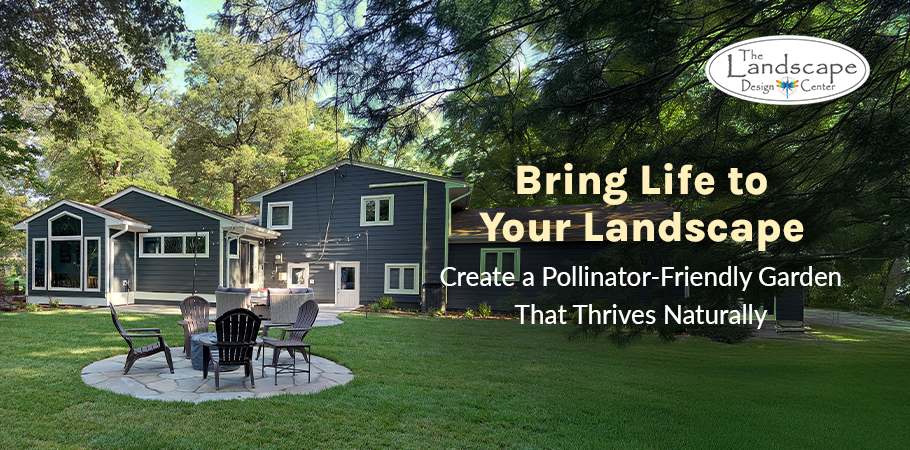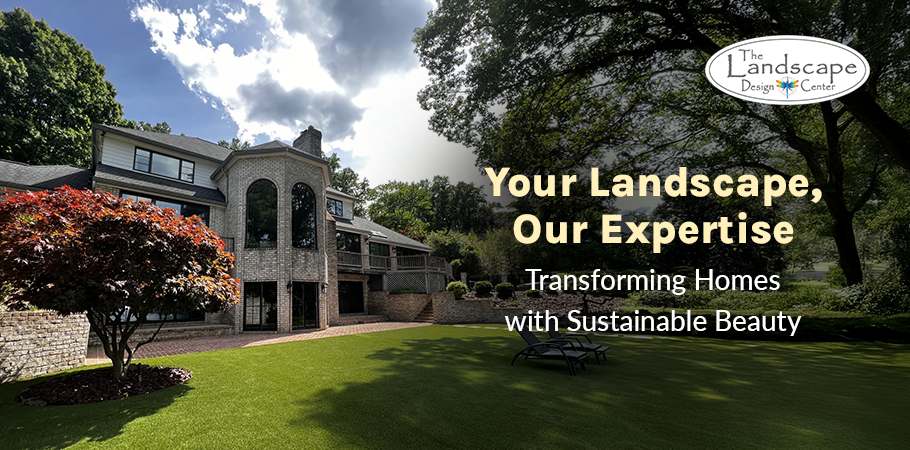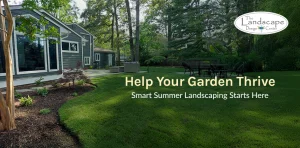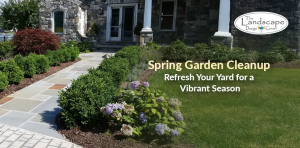
spring.
Spring invites change. Trees start to bud, the soil softens, and birds come back. It reminds us that growth is constant, and gardens are one of the best ways to be part of that rhythm.
More homeowners are now working with landscaping contractors to make their yards look good and serve a deeper purpose. There is growing awareness that a garden should do more than just sit pretty. It should support life.
And that’s where the idea of a pollinator-friendly garden comes in.
What’s All the Buzz About?
Pollinators are the matchmakers of the plant world. Bees, butterflies, moths, hummingbirds, and some beetles move pollen from one bloom to the next. Without this, fruits wouldn’t ripen, and seeds wouldn’t form. The balance of ecosystems depends on them.
Unfortunately, their numbers are falling. Pesticides, climate change, and urban sprawl have wiped out large portions of their habitats. But there’s hope. Gardens can be sanctuaries. A well-designed green space can feed pollinators, shelter them, and help them thrive.
And that’s where your lawn and garden come into play.
Step 1: Start with the Right Blooms
Native is Best
Local wildflowers and shrubs are familiar to regional pollinators. These plants require less fuss and water and grow in sync with native insect life. That harmony matters.
Skip the Fancy Hybrids
Some hybrid plants have been bred to look beautiful but offer no real nutrition for pollinators. They might bloom longer, but they’re often sterile. Pretty doesn’t always mean helpful.
Plan for Continuous Bloom
A pollinator-friendly garden doesn’t peak in one month. It offers blooms from early spring through fall. That steady food source is vital. Use crocus and snowdrops in March. Let Goldenrod and Asters wrap things up in October.
If this feels overwhelming, professional landscaping services can map out your garden for staggered bloom times, so there’s always something in bloom.
Step 2: Rethink Your Grass Game
Cut Back on Lawn Space
Lawns are nice for picnics, but don’t offer much for wildlife. Replacing part of your turf with flowering groundcovers or wildflowers can transform a dull patch into a lively zone.
Clover Is a Quiet Hero
Low-growing white clover fixes nitrogen in the soil, which needs less water, and gives bees a reason to visit. It’s soft underfoot and blends into traditional turf without drawing attention.
Residential landscaping services can help plan practical layouts that balance form and function when considering this shift.
Step 3: Avoid Harsh Chemicals
Be Pesticide-Free
If you spray for bugs, you might kill the pollinators you want to attract. Even small traces of insecticide can cause serious harm to bees and butterflies.
Build Health from the Soil Up
Use compost and organic mulch to feed your garden naturally. Healthy soil grows stronger plants, which are better at resisting pests independently.
Ask your landscaper about eco-safe options. Not all professional landscaping services are created equal. Choose one that’s aligned with your values.
Step 4: Make Space for Shelter
Pollinators Need Places to Hide
It’s easy to think only about flowers, but pollinators need rest, too. They also need nesting spots and protection from wind and predators.
Leave some bare earth for ground-nesting bees. Keep hollow stems and rotting logs for beetles and solitary bees. Add a few small brush piles. These simple touches create safety.
Don’t Over-Clean Your Garden
A super tidy garden with every leaf raked and every corner trimmed might look good on Instagram, but it can be lifeless. Wildlife thrives in slightly messy places. A pollinator-friendly garden allows for a little wildness.
Step 5: Provide Water
Even Insects Get Thirsty
Pollinators need water, especially during dry spells. A shallow dish filled with clean water and small stones can help. The rocks give insects a safe landing spot.
Keep It Fresh
Still, water can breed mosquitoes. Refresh it every few days, and regular visitors will be fluttering through your yard.
A small corner of your pollinator-friendly garden can be reserved just for this.
Step 6: Add Structure with Layers
Think Beyond Ground Level
Pollinators use plants at different heights. Some prefer tree blossoms, while others hover low to the ground. Shrubs, mid-height flowers, and tall plants all serve a purpose.
Color, Shape, and Scent
Bees love purple and blue. Butterflies are drawn to orange and red. Tubular flowers invite hummingbirds. Mixing bloom shapes and shades is not only beautiful, it’s practical.
When you plan purposefully, your pollinator-friendly garden turns into a dynamic, active place instead of a static display.
Step 7: Be Observant and Adapt
Gardens Change
What worked last year may need tweaking this time around. Pay attention. Notice which flowers draw the most visits. Track bloom times. If your garden looks lovely, but no bees show up, something needs adjusting.
Respond with Curiosity
Add a new plant, move one that’s struggling, or try different mulch. Nature isn’t fixed. Neither is your garden.
Many landscaping contractors now offer seasonal support. They help ensure your space continues to thrive and doesn’t fall into a rut.
Step 8: Think Beyond the Fence
Link with Neighbor
Pollinators travel far and wide. A neighborhood filled with small but meaningful gardens is stronger than one large garden alone. Encourage your neighbors to join in, share seeds, and exchange advice.
Start a Community Patch
Unused parks or shared spaces can become mini-ecosystems. They can be transformed into pollinator-rich zones with permission and a little planning.
If you’re managing a shared space or larger property, residential landscaping services can offer scalable solutions tailored to your region and climate.
Final Word: Let Nature Take the Lead
A pollinator-friendly garden isn’t a statement piece. It’s a working, breathing landscape. It invites activity. It welcomes guests of all sizes. And it gives something back to the planet every day.
This spring, design a garden that supports your sense of style and the wildlife that makes everything grow. Whether your space is large or small, it matters.
Need guidance on where to begin? Contact professional landscaping services with ecological know-how. With the right planning, your yard can become part of something much bigger.
And that’s a garden worth growing.
Transform Your Landscape with The Landscape Design Center: Sustainable Beauty for Maryland Homes

The Landscape Design Center.
For over 45 years, The Landscape Design Center has been a trusted name in Maryland, delivering exceptional landscaping solutions across Anne Arundel, Howard, Prince George’s, Baltimore, and Montgomery Counties. As experienced landscaping contractors, we specialize in creating vibrant outdoor spaces that are both functional and environmentally friendly.
Our professional landscaping services include native plant installations, eco-friendly hardscaping, and sustainable water management systems. By integrating these elements, we design landscapes that enhance the beauty of your property and support local ecosystems.
One of our key focuses is developing pollinator-friendly gardens. By incorporating native flowering plants and creating habitats conducive to pollinators like bees and butterflies, we help foster biodiversity and contribute to the health of our environment.
Ready to enhance your outdoor space? Contact us today to discover how our expertise can bring your vision to life.



